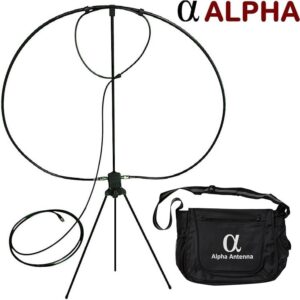MEDICAL ANTENNAS FOR CANCER TREATMENT RESEARCH
Medical antennas for treatment research that use pulsed electromagnetic fields (PEMF) at tumor-specific frequencies for the treatment of cancer.
In 2012 it was revealed that medical treatment research was using one of the Alpha Antenna Portable Magnetic Loop MagLoop Antennas (alphaantenna.com) and Base Magnetic Loop MagLoop Antennas (alphaantenna.com) systems to enhance treatment of cancerous tumors in dogs. Since that day we found that the U.S. Department of Health & Human Services (National Institutes of Health) published the following information.
‘Abstract’ #1 using medical antennas in an instance for a PEMF solution.
Abstract #1
In the past century, there have been many attempts to treat cancer with low levels of electric and magnetic fields. We have developed noninvasive biofeedback examination devices and techniques and discovered that patients with the same tumor type exhibit biofeedback responses to the same, precise frequencies. Intrabuccal administration of 27.12 MHz radiofrequency (RF) electromagnetic fields (EMF), which are amplitude-modulated at tumor-specific frequencies, results in long-term objective responses in patients with cancer and is not associated with any significant adverse effects. Intrabuccal administration allows for therapeutic delivery of very low and safe levels of EMF throughout the body as exemplified by responses observed in the femur, liver, adrenal glands, and lungs. In vitro studies have demonstrated that tumor-specific frequencies identified in patients with various forms of cancer are capable of blocking the growth of tumor cells in a tissue- and tumor-specific fashion. Current experimental evidence suggests that tumor-specific modulation frequencies regulate the expression of genes involved in migration and invasion and disrupt the mitotic spindle. This novel targeted treatment approach is emerging as an appealing therapeutic option for patients with advanced cancer given its excellent tolerability. Dissection of the molecular mechanisms accounting for the anti-cancer effects of tumor-specific modulation frequencies is likely to lead to the discovery of novel pathways in cancer.
‘Abstract’ #2 using a medical antennas in an instance for a PEMF solution.
Similar Product
Medical Antennas For Cancer Research
Abstract #2
We present an analysis of the effects of resonant frequency cancer treatment using pulsed electromagnetic fields (PEMF) with 3.3 MHz carrier frequency and modulated by audio resonant frequencies on the MCF-7 breast cancer cell line in vitro using absorption spectroscopy. This involves a fluorescence dye called PrestoBlue™ Cell Viability Reagent and a spectrophotometry to test the viability of MCF-7 breast cancer cells under different PEMF treatment conditions in terms of the cell absorption values. The DNA molecule of the MCF-7 breast cancer cells has an electric dipole property that renders it sensitive and reactive to applied electromagnetic fields. Resonant frequencies derived from four genes mutated in MCF-7 breast cancer cells [rapamycin-insensitive companion of mammalian target of rapamycin (RICTOR), peroxisome proliferator-activated receptor (PPARG), Nijmegen breakage syndrome 1 (NBN) and checkpoint kinase 2 (CHEK2)] were applied in generating square pulsed electromagnetic waves. Effects were monitored through measurement of absorption of the samples with PrestoBlue™, and the significance of the treatment was determined using the t-test. There was a significant effect on MCF-7 cells after treatment with PEMF at the resonant frequencies of the following genes for specific durations of exposure: RICTOR for 10 min, PPARG for 10 min, NBN for 15 min, and CHEK2 for 5 min.
See more Technical Articles
-
VHF UHF HF Antenna (EmComm MagLoop)$399.00Rated 4.99 out of 5 based on 99 customer ratings
-
100W 10-40M Remote Tune (Base MagLoop)$999.00Rated 5.00 out of 5 based on 9 customer ratings



